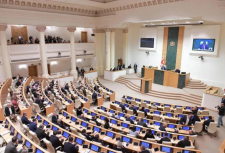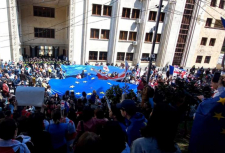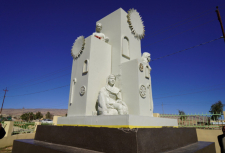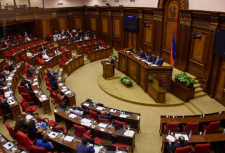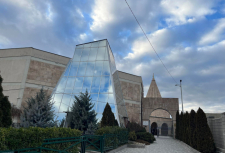Yazidis sheep breeding in the Republic of Armenia: causes of crisis and ways out
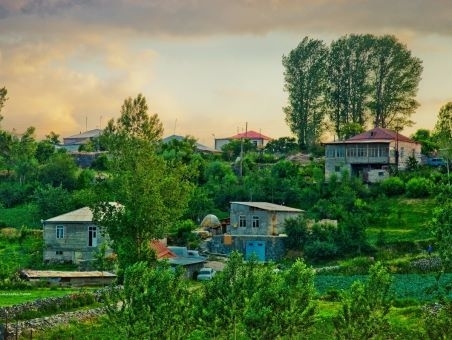
According to the latest data, the number of sheep in the Republic of Armenia decreased again, and on January 1, 2019 it amounted to 615 thousand heads. Although until recently, the livestock grew. The minimum was in 2010 – 481 thousand heads. Since 2011, the number of sheep in Armenia began to increase and from the historical minimum of 2010 it increased up to 747 thousand heads at the beginning of 2016.
Then it seemed that there was a chance to overcome the crisis in sheep breeding in the Republic of Armenia, where Yazidis farmers have a main role. Alas, the social consequences of the catastrophic fall of the sheep population in 2008-2010 were still not overcome.
Let’s remember the causes of the crisis in sheep peak, which fell on 2009-2010 years. After many years of economic crisis in the Republic of Armenia, many Yazidis perceived the increase in purchase prices for sheep as a chance to improve their financial situation. As a result, the sale of sheep was much higher than that needed for recovery of the livestock. And at one point it turned out that even the improved conjecture does not allow you to earn.
Initially, many Yazidis made a profit when in 2008 Armenia intensified the sale of sheep for export to neighboring Iran. Total submitted by the Ministry of agriculture of Armenia, in 2009 sales of sheep increased by 1480 percent, amounting to 142 thousand heads. Prices tripled from $ 62 to $ 187 per sheep.
But in the end, the boom in sheep exports led to a real economic disaster for many Yazidis families. Particularly affected are those of them who first sold their flocks until September 2009, when Armenia for the month was taken 32 500 sheep. At first, they were bought for 60-70 dollars per head. But after November 2009 there was a shortage of sheep in Armenia and they had to be imported from Georgia. As a result, sheep at one time were sold at a price of 220 – 240 dollars per head – but many Yazidis who sold their cattle could not take advantage of this.
"The reproduction of sheep livestock takes a long time. A sheep is not a seed that will grow as soon as it is sown," noted the head of the national Union of Yazidis of the world Aziz Tamoyan. According to him, as a result of sales of cattle to Iran, the number of sheep in some communities of Yazidis of Armenia decreased by almost 90%.
In media began to appear anti-yazidi materials that Yazidis have to blame themselves that "sold out" their cattle. Also, according to a number of officials of the Ministry of agriculture of Armenia, Yazidis have no one to blame their troubles but themselves.
" Yazidi complaints have no basis. They have nothing to complain about, - said Ashot Hovhannisyan, head of the Department of cattle and breeding of the Ministry of agriculture. – No one forced them to sell their sheep, they shouldn’t do it." But in fact, corruption forced Yazidis to "seize" the opportunity to make money on the sale of sheep in 2009 – 2010.
For a long time, the export of sheep from Armenia was monopolized by certain structures close to the former government of the Republic of Armenia. For example, they were engaged in the export of sheep to Iran and the United Arab Emirates, the structures associated with Sasha Sargsyan – the brother of former Armenian President Serzh Sargsyan.
Exporters close to corrupt officials deliberately set low purchase prices for sheep inside the country, which would then earn money by selling them for export.
Therefore, when the Iranian sheep buyers appeared in Armenia and began to offer a much higher price for them, "their" buyers, the Yazidis were simply afraid to "miss their chance". Because most of the families of Yazidis by the time were at the edge of poorness. People were just trying to pay off debts and improve the financial situation of their families. If prior to this, exporters have established a fair purchase price of anything like this would not exist. And today it is very difficult to restore sheep breeding of Yazidis.
The fact is that if the sheep breeder Yazid sold all his sheep and a few years in a row is not engaged in sheep breeding – then he lost skills. In addition, sheep breeding -it's a hard work. And a person who has found a job in the city or outside Armenia, especially highly paid (and Yazidis are hardworking, talented people and can find a use everywhere), often just psychologically is difficult to return him to his native village, and "from scratch" to start raising the traditional economy.
Unfortunately, the crisis in sheep farming has hit many Yazidis communities. In some villages, while people have large herds, successfully earn on the sale of sheep, but in many other villages, people sell their homes, live in poverty and leave their lands. In those Yazidi villages, where people still have sheep, where young people do not leave and help their parents in the hard work of livestock – the situation is improving. Usually this happens where the Yezidis did not succumb to the temptation to sell sheep. And this happens there where is high author spiritual teachers and elders. Experienced mentors of the Yazidi community, by definition, will never advise people to sell their cattle in order to be left without work and means of livelihood.
As a result, in those few Yazidi villages where traditions and respect for elders are strong, young people remain in their native places, families are created and everywhere is heard the laughter of children. This picture wanted to be observed in all villages of Yazidis.
However, unfortunately a number of villages, which villages were empty after the crisis sales of sheep and where is now a question of their survival and even elimination. Traditions of mutual assistance in the Yazidi community also have an important role. But if due to the desolation of the village it is impossible to hope for the help of neighbors –it is very difficult to cope with large flocks of sheep, especially for elderly sheep breeders, whose children have left for work. It is necessary to raise the issue of financial subsidies to Yazidi sheep farmers from the government, assistance in the purchase of highly productive cattle, and the restoration of livestock. After all, in the end it will benefit not only the Yazidi community, but also the economy of the Republic of Armenia.
Tags:
Yazidis sheep breeding in the Republic of Armenia: causes of crisis and ways out

According to the latest data, the number of sheep in the Republic of Armenia decreased again, and on January 1, 2019 it amounted to 615 thousand heads. Although until recently, the livestock grew. The minimum was in 2010 – 481 thousand heads. Since 2011, the number of sheep in Armenia began to increase and from the historical minimum of 2010 it increased up to 747 thousand heads at the beginning of 2016.
Then it seemed that there was a chance to overcome the crisis in sheep breeding in the Republic of Armenia, where Yazidis farmers have a main role. Alas, the social consequences of the catastrophic fall of the sheep population in 2008-2010 were still not overcome.
Let’s remember the causes of the crisis in sheep peak, which fell on 2009-2010 years. After many years of economic crisis in the Republic of Armenia, many Yazidis perceived the increase in purchase prices for sheep as a chance to improve their financial situation. As a result, the sale of sheep was much higher than that needed for recovery of the livestock. And at one point it turned out that even the improved conjecture does not allow you to earn.
Initially, many Yazidis made a profit when in 2008 Armenia intensified the sale of sheep for export to neighboring Iran. Total submitted by the Ministry of agriculture of Armenia, in 2009 sales of sheep increased by 1480 percent, amounting to 142 thousand heads. Prices tripled from $ 62 to $ 187 per sheep.
But in the end, the boom in sheep exports led to a real economic disaster for many Yazidis families. Particularly affected are those of them who first sold their flocks until September 2009, when Armenia for the month was taken 32 500 sheep. At first, they were bought for 60-70 dollars per head. But after November 2009 there was a shortage of sheep in Armenia and they had to be imported from Georgia. As a result, sheep at one time were sold at a price of 220 – 240 dollars per head – but many Yazidis who sold their cattle could not take advantage of this.
"The reproduction of sheep livestock takes a long time. A sheep is not a seed that will grow as soon as it is sown," noted the head of the national Union of Yazidis of the world Aziz Tamoyan. According to him, as a result of sales of cattle to Iran, the number of sheep in some communities of Yazidis of Armenia decreased by almost 90%.
In media began to appear anti-yazidi materials that Yazidis have to blame themselves that "sold out" their cattle. Also, according to a number of officials of the Ministry of agriculture of Armenia, Yazidis have no one to blame their troubles but themselves.
" Yazidi complaints have no basis. They have nothing to complain about, - said Ashot Hovhannisyan, head of the Department of cattle and breeding of the Ministry of agriculture. – No one forced them to sell their sheep, they shouldn’t do it." But in fact, corruption forced Yazidis to "seize" the opportunity to make money on the sale of sheep in 2009 – 2010.
For a long time, the export of sheep from Armenia was monopolized by certain structures close to the former government of the Republic of Armenia. For example, they were engaged in the export of sheep to Iran and the United Arab Emirates, the structures associated with Sasha Sargsyan – the brother of former Armenian President Serzh Sargsyan.
Exporters close to corrupt officials deliberately set low purchase prices for sheep inside the country, which would then earn money by selling them for export.
Therefore, when the Iranian sheep buyers appeared in Armenia and began to offer a much higher price for them, "their" buyers, the Yazidis were simply afraid to "miss their chance". Because most of the families of Yazidis by the time were at the edge of poorness. People were just trying to pay off debts and improve the financial situation of their families. If prior to this, exporters have established a fair purchase price of anything like this would not exist. And today it is very difficult to restore sheep breeding of Yazidis.
The fact is that if the sheep breeder Yazid sold all his sheep and a few years in a row is not engaged in sheep breeding – then he lost skills. In addition, sheep breeding -it's a hard work. And a person who has found a job in the city or outside Armenia, especially highly paid (and Yazidis are hardworking, talented people and can find a use everywhere), often just psychologically is difficult to return him to his native village, and "from scratch" to start raising the traditional economy.
Unfortunately, the crisis in sheep farming has hit many Yazidis communities. In some villages, while people have large herds, successfully earn on the sale of sheep, but in many other villages, people sell their homes, live in poverty and leave their lands. In those Yazidi villages, where people still have sheep, where young people do not leave and help their parents in the hard work of livestock – the situation is improving. Usually this happens where the Yezidis did not succumb to the temptation to sell sheep. And this happens there where is high author spiritual teachers and elders. Experienced mentors of the Yazidi community, by definition, will never advise people to sell their cattle in order to be left without work and means of livelihood.
As a result, in those few Yazidi villages where traditions and respect for elders are strong, young people remain in their native places, families are created and everywhere is heard the laughter of children. This picture wanted to be observed in all villages of Yazidis.
However, unfortunately a number of villages, which villages were empty after the crisis sales of sheep and where is now a question of their survival and even elimination. Traditions of mutual assistance in the Yazidi community also have an important role. But if due to the desolation of the village it is impossible to hope for the help of neighbors –it is very difficult to cope with large flocks of sheep, especially for elderly sheep breeders, whose children have left for work. It is necessary to raise the issue of financial subsidies to Yazidi sheep farmers from the government, assistance in the purchase of highly productive cattle, and the restoration of livestock. After all, in the end it will benefit not only the Yazidi community, but also the economy of the Republic of Armenia.
Tags:

